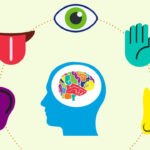Sequences of Gross Motor Development & Primitive Reflexes
You may be wondering what gross motor development is and what does the sequence of gross motor development mean? Gross motor development involves the development of the large muscles of the body including muscles in the arms, legs, and torso. These muscles allow infants/children to engage in everyday activities such as crawling, walking, running, lifting, and jumping. From infancy, these skills usually develop in a sequence starting from when a child is born until later in adolescence.
Birth-6 months:
1-4 months:
-
Moro reflex develops: infants will drop the head back, arms flail out, then arms come back in and cross over the chest
3-4 months:
-
Most infants can lift their heads up when they are in a prone position
-
Rooting reflex develops: occurs when infants check is stroked and the baby turns towards the stimulus
3-6 months:
-
Infants will be able to grasp an item such as a rattle if put in their hand
4-6 months:
-
Most infants can have the ability to raise their trunk in the prone position
6 months:
-
Most infants can sit alone with arms forward, propping on hands, using a wide base of support
-
Most infants are able to roll in both directions from supine to prone and prone to supine
-
Asymmetrical Tonic Reflex develops: infant’s head turns to the side, the side the infant is looking at the upper extremity goes into extension and the lower extremity goes into extension while the other upper/lower extremity goes into flexion
6-12 months:
6-9 months:
-
Most infants can sit independently
-
Most infants can move in and out of sitting
-
Symmetrical Tonic Neck Reflex develops: when the infant is in a quadruped position, the infant’s neck flexes, the arms flex, and the legs extend. Then the infant’s neck extends & arms extend, and legs flex
10 months:
-
Most infants can crawl on their belly, then begin crawling on all fours
12 months:
-
Most infants can begin to walk with a hand-held (cruising)
12-18 months:
-
Most infants can walk well and squat to pick up a toy off the ground
-
Most infants can begin to walk upstairs with one hand-held
-
Most infants can begin to run short distances
18-24 months:
-
Can begin to walk well
-
Has the ability to walk up and down the stairs
-
Can run, squat, and climb on furniture
-
Can throw a ball at a large target
-
Can jump with both feet (in place)
24-36 months:
-
Can begin to hop on one foot
-
Can jump from a step or small height
3-4 years:
-
Begins to skip
-
Can stand briefly on one foot
-
Can alternate feet when walking upstairs
-
Can jump from step with 2 feet
-
Rides tricycle (a bike with pedals)
4-5 years:
-
Can hop for long sequences (4-6 steps)
-
Can climb on playground equipment, swinging from arms or legs
-
Skips for a long distance
-
Has the ability to throw a ball and hit a target
5-6 years:
-
Catches a ball with two hands
-
Kicks with accuracy
6-10 years:
-
Runs with speed and endurance
-
Throws a ball well to long distances






